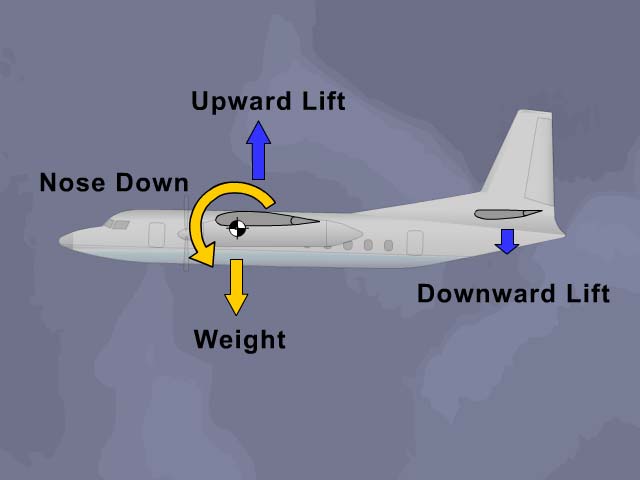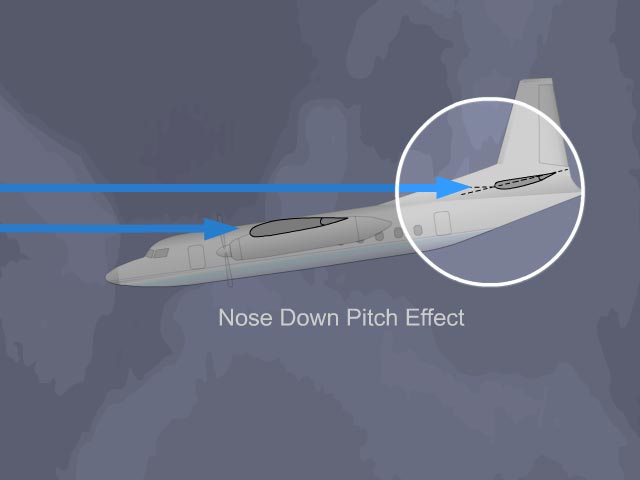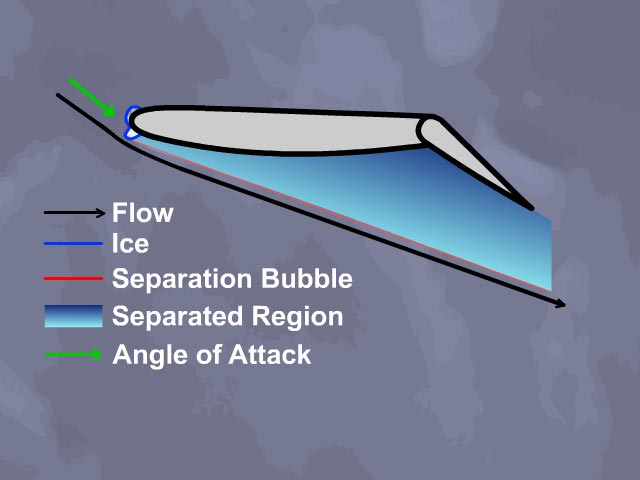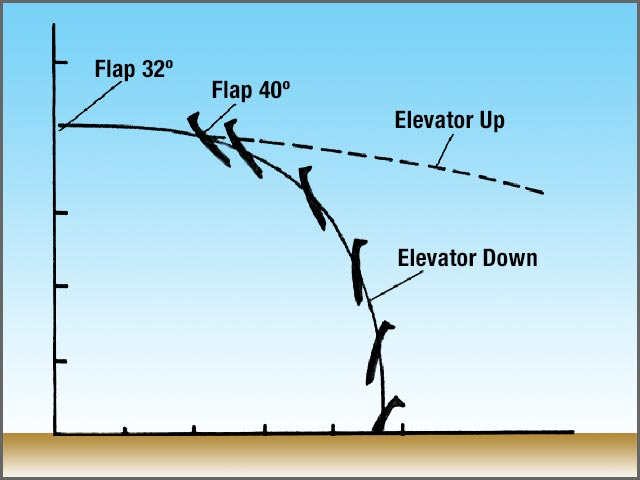A Pilot's Guide to Inflight Icing
Module III - In an Emergency
Aerodynamics
Section: Tail Stall
Start This SectionTail Stall In an Emergency
In most aircraft designs, the weight, which acts through the center of gravity, is forward of the wing center of lift. These two forces tend to pitch the aircraft nose down. The horizontal stabilizer counteracts this nose-down pitching moment by generating sufficient downward "lift" to hold the tail down.
Lowering flaps both increases the wing lift and moves the center of lift aft. These two factors increase the nose-down pitching moment that the tail must overcome. With flaps lowered, the tail is near its performance limit.

Vertical forces on aircraft
Tail Stall In an Emergency
The horizontal tailplane acts like an upside down wing.
The lift generated by the tailplane acts downward. Therefore, to avoid a tail stall, it is crucial to keep the airflow attached to the lower surface of the tailplane. This is similar to the wing, where it is crucial to keep the airflow attached to the upper surface to avoid a wing stall.

Tail is an upside-down wing
Tail Stall In an Emergency
The tail angle of attack is mainly controlled by wing flap deflection and aircraft angle of attack.
Flap extension dramatically increases the tailplane angle of attack by increasing the wing downwash.
Lowering the aircraft angle of attack, for example by pitching the nose down, also increases the tailplane angle of attack.
These configuration and attitude changes take the tailplane closer to the stall.

Flap downwash and Nose Down Pitch Effect*
*Realistically, flap extension includes both downwash and pitch effects.
Tail Stall In an Emergency
Ice accretion will cause the tail to stall at a lower angle of attack and limit the maximum amount of downward lift the tailplane can generate.
As ice accretion increases or the tailplane's angle of attack is increased, a separation bubble will develop on the tail's lower surface and grow aft. As the bubble grows larger, more elevator deflection will be needed to maintain the required downward lift of the tail. If the bubble grows past the elevator hinge point, the low pressure under the elevator may force the elevator down (and yoke forward), causing a dramatic uncommanded nose-down pitch.

Tail Stall
Related Information
Iced Tailplane with Tufts
Grant Besley, DC-10 Captain
Tail Stall In an Emergency
When the nose of the aircraft pitches down in a tail stall, altitude is lost very rapidly. Even if you immediately apply the correct recovery techniques, you would probably still lose substantial altitude. If you were to experience a tail stall on final approach, recovery would be unlikely.

Trajectory of ice-contaminated tailplane stall accident aircraft (1977 Vickers Viscount, Stockholm, Sweden)
Related Information
Actual Tail Stall and Recovery (NASA Test Flight)